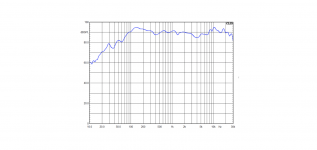I want to engage in single driver speakers, my only concern is, what happens to baffle step compensation? I have not seen this spoken about. Is it considered in the design of the cabinet?
The baffle step needs to be incorporated in exactly the same way as any other speaker, usually beginning with a measurement.
That's a bit odd, given how often it's mentioned. 😉 I just typed 'Baffle Step Compensation' into the search facility for this forum and this is the list of hits:I want to engage in single driver speakers, my only concern is, what happens to baffle step compensation? I have not seen this spoken about. Is it considered in the design of the cabinet?
https://www.diyaudio.com/community/...t&c[child_nodes]=1&c[nodes][0]=51&o=relevance
I then repeated the exercise with 'BSC' as the search term and obtained this:
https://www.diyaudio.com/community/...t&c[child_nodes]=1&c[nodes][0]=51&o=relevance
Be that as it may, as has been noted, it ideally starts with measuring your speakers on and off axis, sans filtering to determine the existing balance. You then use that to design the LP shelving network to shape it to your target response. Note that given the polar characteristics of most wideband drive units, the off-axis tends to be of particular significance -unless your design is for nearfield use only, that usually means some form of rising on-axis will give the most consistent results in most practical room conditions, especially larger spaces.
What Sangram said. I posted this recently in the https://www.diyaudio.com/community/threads/baffle-step-compensation-sizing.383914/post-6969796 thread so instead of typing iy all again.
Short story. BSC is a can of worms.
dave
Short story. BSC is a can of worms.
dave

